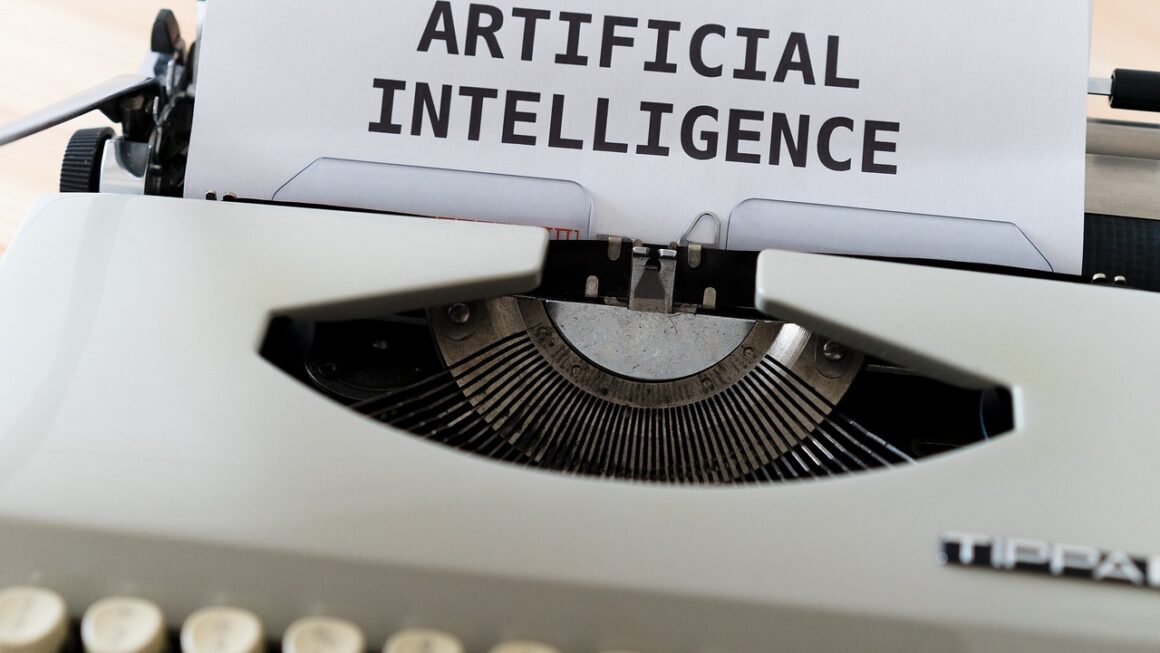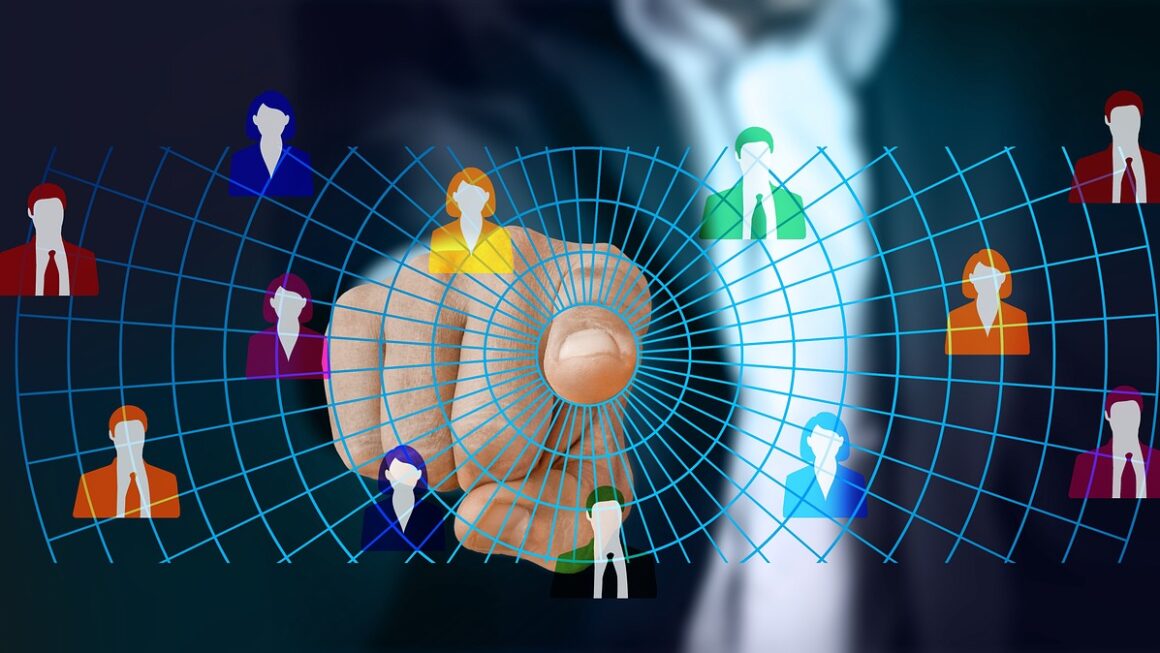AI is rapidly transforming our world, promising to revolutionize industries from healthcare to finance. Yet, lurking beneath the surface of this technological marvel is a critical challenge: AI bias. If left unaddressed, these biases can perpetuate and amplify existing societal inequalities, leading to unfair and even discriminatory outcomes. Understanding and mitigating AI bias is crucial for ensuring a fair and equitable future powered by artificial intelligence. This post delves into the intricacies of AI bias, exploring its origins, consequences, and potential solutions.
Understanding AI Bias: A Deep Dive
What is AI Bias?
AI bias occurs when a machine learning algorithm produces results that are systematically prejudiced due to flawed assumptions in the machine learning process. This bias can manifest in various ways, leading to unfair or discriminatory outcomes for certain groups of people. It’s important to understand that AI isn’t inherently biased; it learns from the data it’s trained on. Therefore, bias typically originates in the data itself or the way the algorithm is designed.
Types of AI Bias
Several types of bias can creep into AI systems. Here are some common examples:
- Data Bias: Occurs when the training data doesn’t accurately represent the population the AI will be used to make decisions about. This is perhaps the most prevalent type of bias.
- Sampling Bias: A form of data bias where the data collected is not representative of the population because some members of the population are less likely to be included than others.
- Algorithm Bias: Arises from flaws in the algorithm itself, such as choosing the wrong model type or incorrectly defining the objective function.
- Confirmation Bias: When developers unintentionally design the system to confirm their existing beliefs or assumptions.
- Measurement Bias: Results from using inaccurate or incomplete measurements during data collection.
The Impact of AI Bias
The consequences of AI bias can be far-reaching and detrimental:
- Discrimination: AI systems used in hiring, lending, or criminal justice can perpetuate existing societal biases, leading to unfair or discriminatory outcomes for certain groups.
- Reinforced Stereotypes: Biased AI can reinforce negative stereotypes and prejudices, further marginalizing certain communities.
- Reduced Accuracy: Bias can decrease the accuracy of AI systems, especially for underrepresented groups. For example, facial recognition systems often perform worse on people with darker skin tones because they are trained on datasets that are predominantly composed of lighter-skinned individuals.
- Erosion of Trust: Biased AI can erode public trust in technology and institutions that use it.
The Roots of AI Bias: Where Does It Come From?
Biased Data
As mentioned earlier, biased data is a primary source of AI bias. This can happen in several ways:
- Underrepresentation: When certain groups are underrepresented in the training data. For example, a dataset used to train a facial recognition system might contain primarily images of white men, leading to poor performance on women and people of color.
- Historical Bias: If the training data reflects past biases, the AI system will likely perpetuate those biases. For instance, using historical hiring data, which might reflect gender or racial biases, to train an AI-powered recruiting tool.
- Proxy Variables: Using variables that are correlated with sensitive attributes (e.g., race or gender) as proxies in the model. Even if the sensitive attribute itself isn’t directly used, the proxy variable can still introduce bias. For example, using zip code as a proxy for race in a loan application model.
Biased Algorithms
Sometimes, the algorithm itself can contribute to bias:
- Model Selection: Choosing an inappropriate model for the task at hand. Some models are more prone to bias than others depending on the data.
- Objective Function: The objective function defines what the AI system is trying to optimize. If the objective function is poorly defined or biased, the AI system will optimize for a biased outcome.
- Lack of Fairness Considerations: Not incorporating fairness metrics into the algorithm design and evaluation process.
Human Bias in Development
Humans play a crucial role in developing AI systems, and their biases can inadvertently influence the AI’s behavior:
- Data Collection: The choices made during data collection can introduce bias. For example, how data is labeled or what data sources are used.
- Feature Engineering: The process of selecting and transforming data features can introduce bias.
- Algorithm Design: Developers’ assumptions and biases can influence the design of the algorithm.
Mitigating AI Bias: Strategies and Techniques
Data Auditing and Preprocessing
- Data Audits: Conduct thorough audits of the training data to identify and address potential biases. Look for underrepresentation, historical biases, and proxy variables.
- Data Balancing: Employ techniques to balance the training data by oversampling underrepresented groups or undersampling overrepresented groups. Be cautious with oversampling, as it can lead to overfitting.
- Data Augmentation: Generate synthetic data to augment the training data and improve representation of underrepresented groups. Ensure the synthetic data is realistic and doesn’t introduce new biases.
- Bias Detection Tools: Utilize automated tools to help identify biases in datasets.
Algorithmic Fairness Techniques
- Pre-processing Techniques: Modify the training data to remove or mitigate bias before training the model.
- In-processing Techniques: Modify the algorithm to incorporate fairness constraints during training. For example, adding penalties for biased predictions.
- Post-processing Techniques: Adjust the model’s predictions after training to improve fairness.
- Fairness Metrics: Use fairness metrics (e.g., equal opportunity, demographic parity, equalized odds) to evaluate the fairness of the AI system. However, be aware that different fairness metrics can conflict with each other, so it’s important to choose the appropriate metric for the specific application.
Human-Centered AI Development
- Diverse Teams: Build diverse teams of developers, researchers, and ethicists to bring different perspectives and experiences to the AI development process.
- Transparency and Explainability: Design AI systems that are transparent and explainable, so that users can understand how the system makes decisions.
- User Feedback: Solicit feedback from users, especially those from underrepresented groups, to identify and address potential biases.
- Ethical Guidelines: Develop and follow ethical guidelines for AI development to ensure that AI systems are used responsibly and ethically.
Real-World Examples of AI Bias and Mitigation
Amazon’s Recruiting Tool
- Bias: Amazon developed an AI recruiting tool that was trained on historical hiring data. This data reflected the fact that most of Amazon’s employees were men, leading the AI to discriminate against female candidates. The tool penalized resumes that contained the word “women’s” (as in “women’s chess club”) and downgraded graduates of two all-women’s colleges.
- Mitigation: Amazon ultimately scrapped the tool, recognizing the inherent biases.
COMPAS Recidivism Prediction
- Bias: COMPAS is a risk assessment tool used by the U.S. criminal justice system to predict the likelihood of a defendant re-offending. ProPublica found that COMPAS was more likely to incorrectly flag black defendants as high-risk, while incorrectly flagging white defendants as low-risk.
- Mitigation: Efforts to address this bias include developing alternative risk assessment tools and implementing fairness constraints in the COMPAS algorithm. However, the debate continues on how to best address these biases.
Facial Recognition Technology
- Bias: Facial recognition systems have been shown to perform poorly on people with darker skin tones, particularly women. This is due to a lack of diversity in the training data.
- Mitigation: Researchers are working to improve the accuracy of facial recognition systems by collecting more diverse datasets and developing algorithms that are less sensitive to skin tone. Additionally, there is growing debate about the ethical implications of using facial recognition technology, especially in law enforcement.
Conclusion
AI bias poses a significant threat to the fairness and equity of AI systems. Recognizing the sources of bias, implementing mitigation strategies, and fostering a culture of ethical AI development are crucial steps toward building a more just and inclusive future. By actively addressing AI bias, we can harness the power of AI for good and ensure that its benefits are shared by all. The key takeaway is that mitigating AI bias is an ongoing process that requires vigilance, collaboration, and a commitment to fairness.




